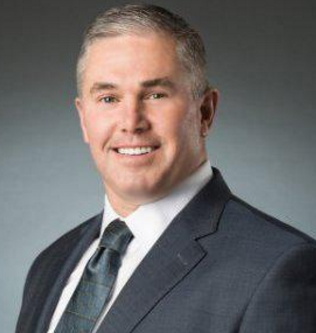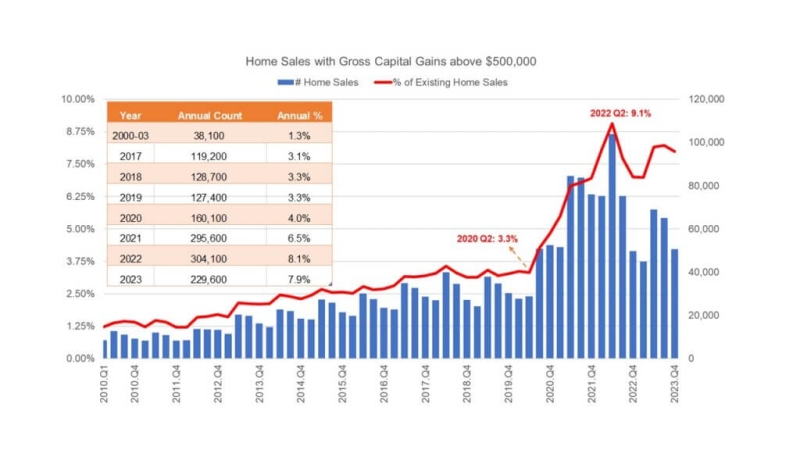Advertisement
The Staircase to Success Starts With Social Media

As the years have progressed, it is easy to see the whole world going digital. At a young age, individuals are becoming active on social media, much more often than ever thought possible. In a sense, some would say social media is even running their lives. In the mortgage industry specifically, it’s important to reach prospective homebuyers through social media alongside the traditional everyday methods. With that being said, understanding how to market to a lender or loan officer properly creates a strong social media presence, thus building the staircase to a successful mortgage company.
Recognizing today’s target audience in the mortgage industry is the first step in creating any type of marketing campaign. According to Marketer.com, 74.2 percent of U.S. adult Millennial Internet users will bank digitally via any device. It is obvious that Millennials are currently dominating the housing market, so it is essential to reach them where they are spending most of their time. Millennials are the first generation to truly live through the digital era, growing up when Internet usage skyrocketed. Most of them utilize at least one social media platform, making social media an ideal way to market for lenders. Therefore, lenders must strategize and determine the best way to reach their target audience online.
Additionally, before starting a marketing campaign to bring in traffic, one must optimize their profile on social media. This includes a professional headshot, contact information and no inappropriate content. A headshot should not consist of a cropped photo out at a party, it should present a mortgage professional in business attire, demonstrating their competence to prospective borrowers. If there are any photos or posts that a loan officer has been tagged in that they wouldn’t want a potential employer to see, it should be removed. Homebuyers online need to be able to trust their lender with their personal information, and they should be able to find no reason that would give them doubts.
The next step in building up a social media campaign includes content creation, and deciding which types of content will generate the most traffic. A good way to start would be to take some time to scroll down a lender’s newsfeed, seeing what catches their eye. Is it the attractive color sequence, sound or video, or possibly the interactive graphics? If an item stops one from scrolling down, then it is doing what is what meant to do. This is the type of content that mortgage companies should be sharing.
Video is controlling a great deal of marketing efforts, mainly because of the personal connection it has the ability to create. Video allows borrowers to get to know someone, without ever interacting one on one. They can get a sense as to who a loan officer is before they consider reaching out to them. The use of live Q&A videos is useful, as borrowers can remain behind the scenes, getting answers to their questions before giving out any personal information. This not only helps the borrower through the homebuying process, but it presents the LO as an expert in the industry. At that point, they will be someone’s trusted loan advisor, and the odds of a homebuyer choosing their services in the future is much higher.
Creating video content, or being put on the spot on live videos, can be intimidating, but it makes the user experience so much more appealing. Overall, video content presents a lender as being more confident, personable, and will attract many more prospective homebuyers.
Infographics with animations are more rare in the mortgage industry because not all companies have the resources to create them. However, they should not be forgotten about. With the right tools and tutorials, there is no reason why a lender wouldn’t be able to create a simple, attractive Infographic that will draw borrowers in. If it is animated, potential homebuyers will wonder what is moving across their screen, and will most likely stop to look at it for an extended period of time. This will help to get a viewer to stop and read about the otherwise boring statistics that are more difficult to explain.
Another item to be considered is an emotional appeal. If a post or video that a lender is preparing to post does not make them feel a certain way, then their target audience will not feel it either. Basically, in order for their followers to feel invested on an emotional level, borrowers must feel that the post matters. With that being said, they will be compelled to share it with others. Shareable content is what will ultimately get a mortgage company’s name out there. In turn, it will help to build relationships with potential homebuyers.
Also, every post should not be too self-serving. The point is to warm up a prospective borrower, rather them sell them from the beginning. It would be a good idea to create variety in social media posts by sharing inspirational graphics, quotes, or even “National Day” posts such as “National Postal Worker Day” or “National Pizza Day.” While it may seem silly, there are social media users who love this type of content. Even if they aren’t looking for a loan, they may share these posts, and reach someone who is. It’s a great way for any loan officer to get their name known, as well as give their followers an idea of what type of person they are. No one wants to see mortgage content all day, every day, so this would create a nice mix up of content.
So many individuals are concerned about what they should post on social media, that they forget about topics that should be avoided. For one, it’s essential to refrain from discussing personal info on social media outlets. This information is private, and even if a potential borrower posts it, a lender should delete this information and take the conversation elsewhere. Also, lenders should never give financial advice outside their job scope. It can create a wide range of legality issues for the entire company as a whole.
One of the most important things to do, which many professionals neglect, is fact-checking. One may see a cool post that seems informative, but how true is it? A lender’s followers only want credible sources, so it is the responsibility of the LO to verify the information they are sharing to their pages. The last thing they want to do is stir the pot, and open the door for unnecessary criticisms. This may go without saying, but mortgage professionals should also never talk down to, or speak negatively toward their followers. For example, do not discuss a specific borrower’s low credit score back and forth with them online. It is hard to judge the way a comment is meant to be said, and it could come across as derogatory.
Additionally, avoid discriminatory terms, slang, refrain from mentioning gender, race, religion, and anything that could make a borrower feel like they are being singled out.
Last but not least, it is imperative that all loan officers and mortgage companies demonstrate their appreciation to their followers. Everyone wants to feel that their opinions and thoughts are valued, including today’s homebuyer market. Make it a point to acknowledge criticisms, never delete bad reviews, and always try to turn every bad situation into a better one. Loan officers must be responsive in commenting back on social media, especially if there are items of concern for certain followers. Therefore, as long as one thanks their audience and shows that they care, homebuyers will feel much more connected to their selected LO.
Overall, managing a social media profile can seem time-consuming, but it brings in a wider range of borrowers. Lenders cannot solely rely on real estate agent referrals in today’s market, especially when the Millennial buyer is living online. If a loan officer creates a social media account, it is essential to remain active on it. Creating a profile and neglecting it is just as bad as not having one at all, if not worse. All in all, mortgage professionals are discovering how critical the digital footprint they leave is when it comes to building the staircase to success, and the first step starts with social media.
 Curt Tegeler, chief executive officer of WebMax, is responsible for providing direction for action to all employees and business initiatives, including communicating and implementing the company’s vision and mission; leading, guiding, directing and evaluating the work of executive leaders; formulating and implementing the strategic plan; forming, staffing, guiding, leading and managing WebMax; evaluating organizational success; and representing WebMax in civic and professional activities.
Curt Tegeler, chief executive officer of WebMax, is responsible for providing direction for action to all employees and business initiatives, including communicating and implementing the company’s vision and mission; leading, guiding, directing and evaluating the work of executive leaders; formulating and implementing the strategic plan; forming, staffing, guiding, leading and managing WebMax; evaluating organizational success; and representing WebMax in civic and professional activities.
This article originally appeared in the July 2019 print edition of National Mortgage Professional Magazine.
About the author





